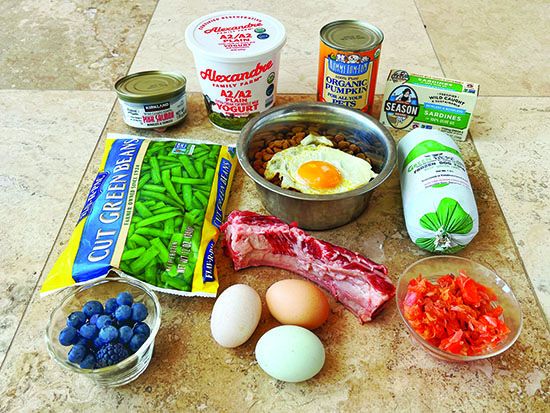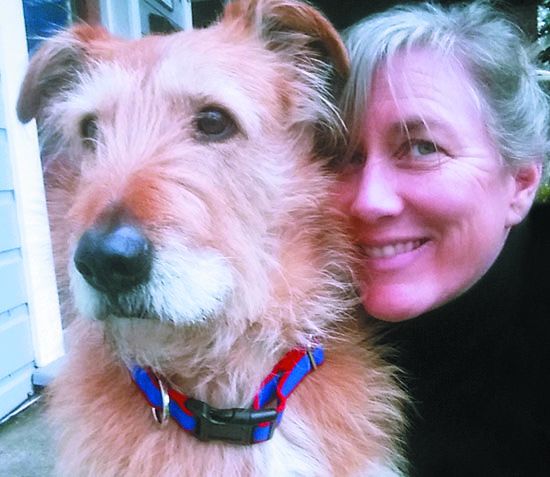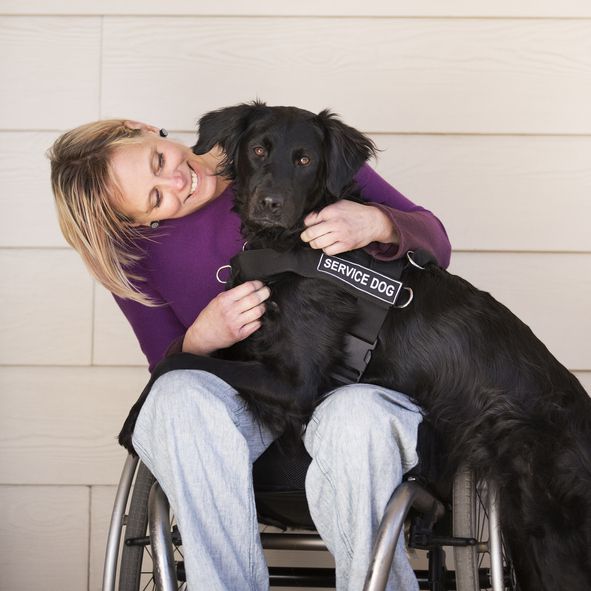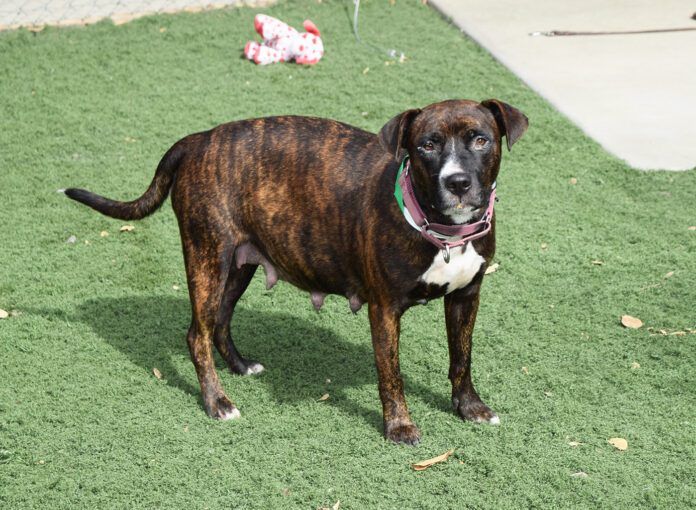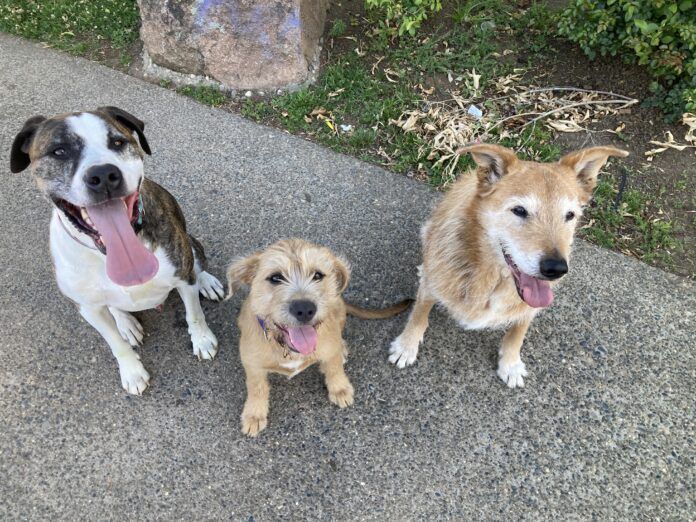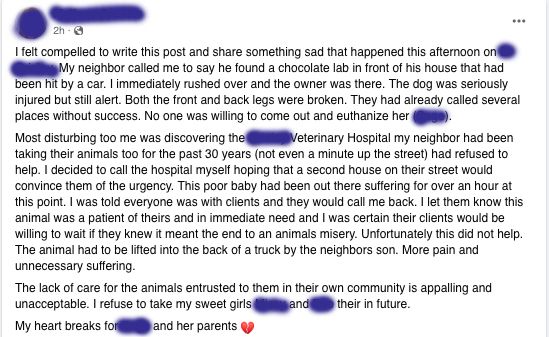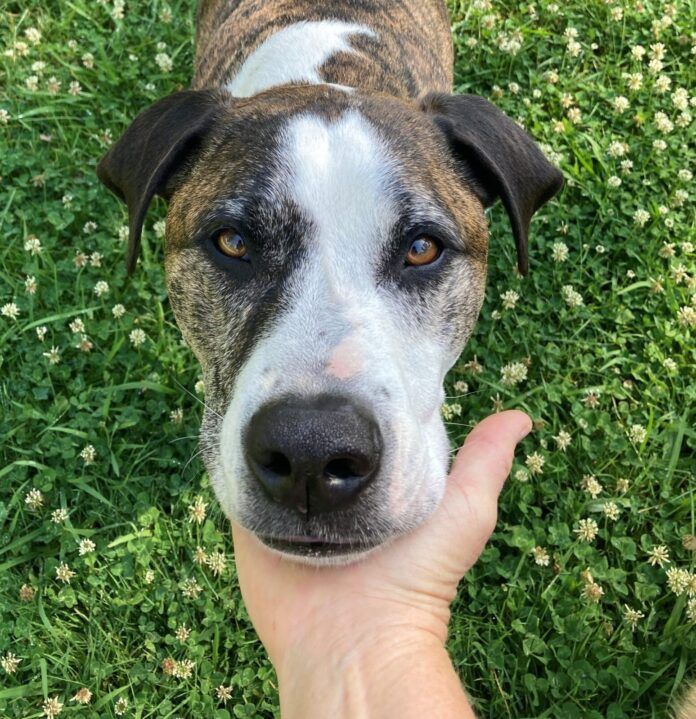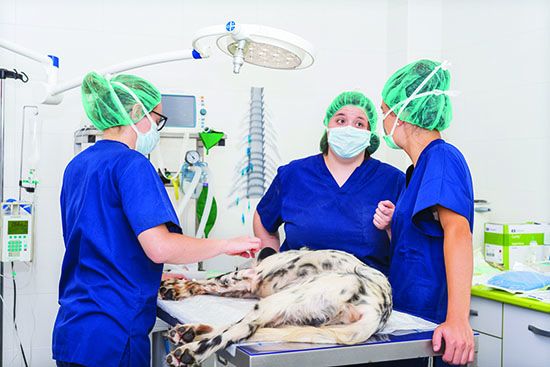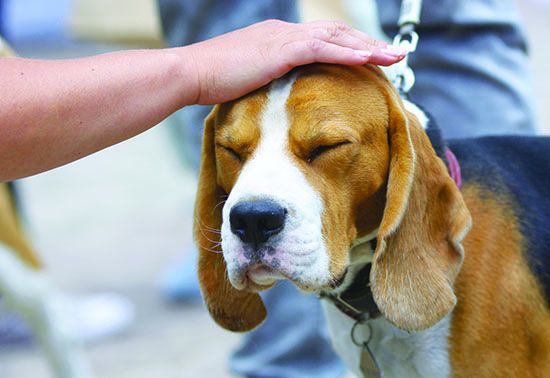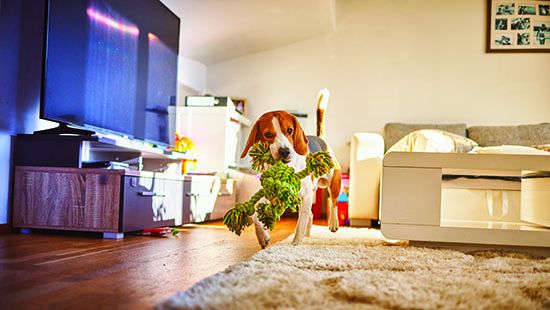America’s most popular dog food is kibble or dry food, which, because it is convenient and affordable, accounts for more than 60% of all dog food sales. Unfortunately, dry dog food is far from perfect.
The good news is, that you can vastly improve a dry diet by making simple additions of cooked or raw foods, says Mary Straus, long-time pet-food researcher and owner of the DogAware.com website. “Today’s consumers have many dog food choices,” Straus says, “but kibble is the diet that most benefits from enhancement since it is so highly processed and because it tends to be high in carbohydrates, which are needed for the extrusion process.”
Straus recommends adding animal-source foods such as eggs, meat, or dairy rather than plant foods such as grains, legumes, and starchy vegetables. Most dry foods are already high in carbohydrates, she explains, and dogs have no nutritional need for carbohydrates. In contrast, animal protein supports the immune system and central nervous system, contributes to wound healing, helps build lean muscle, and is required for skin and coat health.
What to Add to Dog Food
In general, added foods should represent only a small portion of the calories your dog consumes. “Replacing more than 25% of the calories from a commercial diet with fresh foods, treats, and chews risks seriously unbalancing the overall diet, unless care is taken to balance the added portion,” Straus explains. She offers the following guidelines to help improve your dog’s health while adding enjoyment and variety:
1. Eggs
Feed eggs raw or lightly scrambled, soft-boiled, or hard-boiled. “Whole raw eggs are fine,” says Straus, “as the yolks contain plenty of biotin to make up for what raw egg whites destroy, but the whites are more easily digested when cooked.
Eggs are one of the healthiest and easiest additions to make. Dogs weighing 40 pounds or more can handle a whole egg, so I’d recommend half an egg (or a whole egg every other day) for dogs weighing 20 to 40 pounds and proportionately less for smaller dogs.”
2. Muscle meat (including heart) and organ meats.
Add any kind of meat, such as chicken, turkey, or lean beef, either ground or in chunks that are small enough to prevent choking, served raw or lightly cooked (never feed cooked bones).
While liver and other organ meats provide beneficial nutrients, Straus no longer recommends feeding fresh or freeze-dried beef liver to kibble-fed dogs. “This is because most commercial foods are already high in copper,” she explains, “and excessive copper in the diet can lead to copper storage disease.”
For organ meats other than beef liver, she recommends introducing small amounts. Organ meats like heart and poultry gizzard are nutritionally similar to muscle meats and can be fed in greater quantity, though some dogs might experience digestive upset if too much is fed at one time.
3. Fish
Canned sardines (preferably packed in water rather than oil), jack mackerel, and pink salmon are wonderful additions, says Straus, because of their beneficial fatty acids and trace minerals.
“One small sardine weighing less than half an ounce provides 100 to 150 mg of the omega-3 fatty acids EPA and DHA,” she says, “and I recommend 3 to 10 mg EPA/DHA per pound of body weight daily.”
Don’t feed raw salmon or trout from the Pacific Northwest (California to Alaska) because it may contain a parasite that is fatal to dogs. This may include other salt-water fish that spawn in fresh water such as smelt, sturgeon, shad, and striped bass.
4. Yogurt and Kefir
Fermented dairy products that are homemade or manufactured with added probiotics – and are free of sugar or xylitol – can help with digestive issues. Whole-milk yogurt or kefir is fine unless your dog needs a low-fat diet. (See “Dogs and Dairy Products,” WDJ May 2022.)
5. Cottage Cheese or Ricotta Cheese
Most dogs enjoy cottage cheese and ricotta, and if the milk used to make them comes from grass-fed cattle, especially A2 milk or goat’s milk, these protein-rich cheeses are easily digested.
6. Canned Pumpkin (not pumpkin pie mix)
This traditional remedy for diarrhea and constipation, is an all-purpose digestive aid. Feed small amounts, such as 1 teaspoon plain canned or pureed cooked pumpkin per 10 pounds of body weight once or twice per day.
7. Cooked or Pureed Vegetables
Because dogs don’t chew their food enough to break down cell walls, whole raw vegetables don’t provide much nutritional value. Vegetables pureed in a food processor, juicer, or blender are more digestible; cooked vegetables can be digested without having to be pureed.
Recommended cooked/pureed plants include carrots, celery, all types of greens, broccoli, Brussels sprouts, zucchini, asparagus, turnips, and parsnips. Because they can be toxic to dogs, onions are not recommended and, if your dog has any symptoms of arthritis or inflammation, avoid plants from the nightshade family, which includes potatoes, tomatoes, peppers, eggplant, tomatillos, and goji berries.
8. Fruit
Most dogs enjoy bananas, apples, melons, pears, blueberries, and other fresh, ripe fruits. Avocados should be avoided or fed in moderation, says Straus, as avocados are very high in fat and calories. Grapes, raisins, and fruit seeds and pits are also potentially hazardous. The main problem with fruit is its sugar content, which is why it’s a good idea to offer small rather than large amounts to your dog.
9. Raw Green Tripe
You can buy bleached white honeycomb tripe at your supermarket, but while your dog might be interested, that portion of a cow’s stomach won’t provide much nutritional value. Your dog would greatly prefer green tripe, which is untreated and greenish brown in color and smells terrible, at least to us humans. Raw green tripe from grass-fed cattle is highly recommended.
While some raw feeders serve their dogs entire meals of just green tripe, if you feed a dry diet, you should limit this treat to a maximum of 25% or less of your dog’s daily caloric intake.
10. Recreational Bones
For many dogs, an after-dinner raw bone is an ideal dessert. It can clean teeth, help prevent gum disease, and provide chewing pleasure and jaw exercise.
However, bones can cause broken teeth, especially if their size and shape allow dogs to get them between their molars and crunch down. Marrow bones are a particular risk. Knuckle bones may be safer because of their shape, especially for large dogs and aggressive chewers. Bone shards can cause serious issues if swallowed.
For best results, feed only raw, fresh bones and remove them once the tissues connected to them have been eaten and before they dry out. Cooked or dry bones can splinter and are not recommended.
For those who want an easy way to upgrade their dog’s diet by feeding fresh foods, Mary Straus recommends the following books. See also Straus’ website: dogaware.com.
Unlocking the Canine Ancestral Diet by Steve Brown includes guidelines for feeding fresh foods one day a week to dogs who otherwise eat a commercial diet. His book See Spot Live Longer is available in print and in shortened form as an eBook.
Chow: Simple Ways to Share the Foods You Love with the Dogs You Love by Rick Woodford describes foods that can be added to your dog’s bowl. Feed Your Best Friend Better: Easy, Nutritious Meals for Dogs by the same author (revised in 2021) provides cooked recipes for different situations, including feeding half commercial and half homemade.


